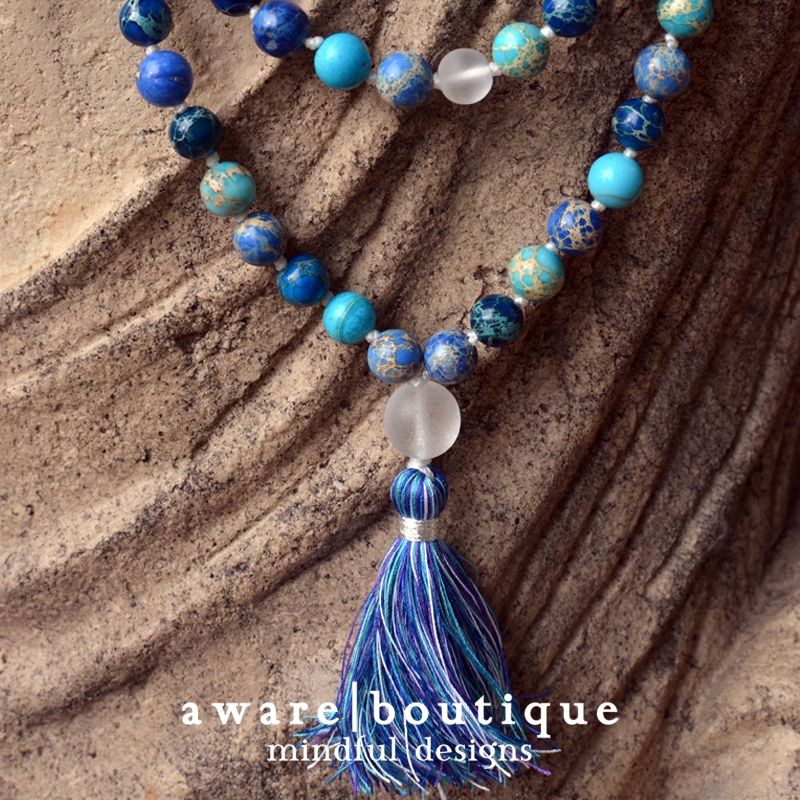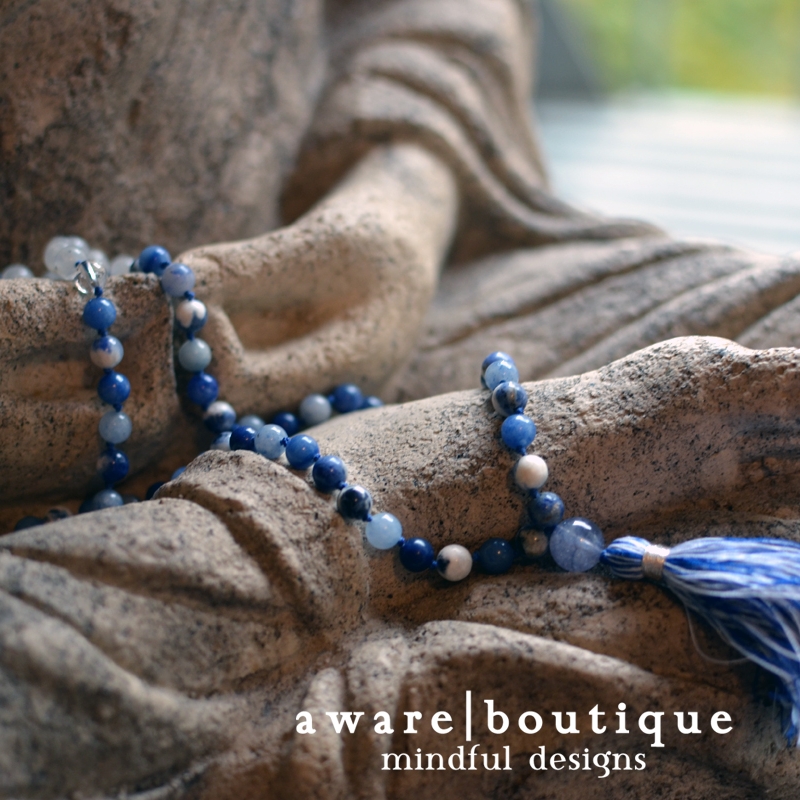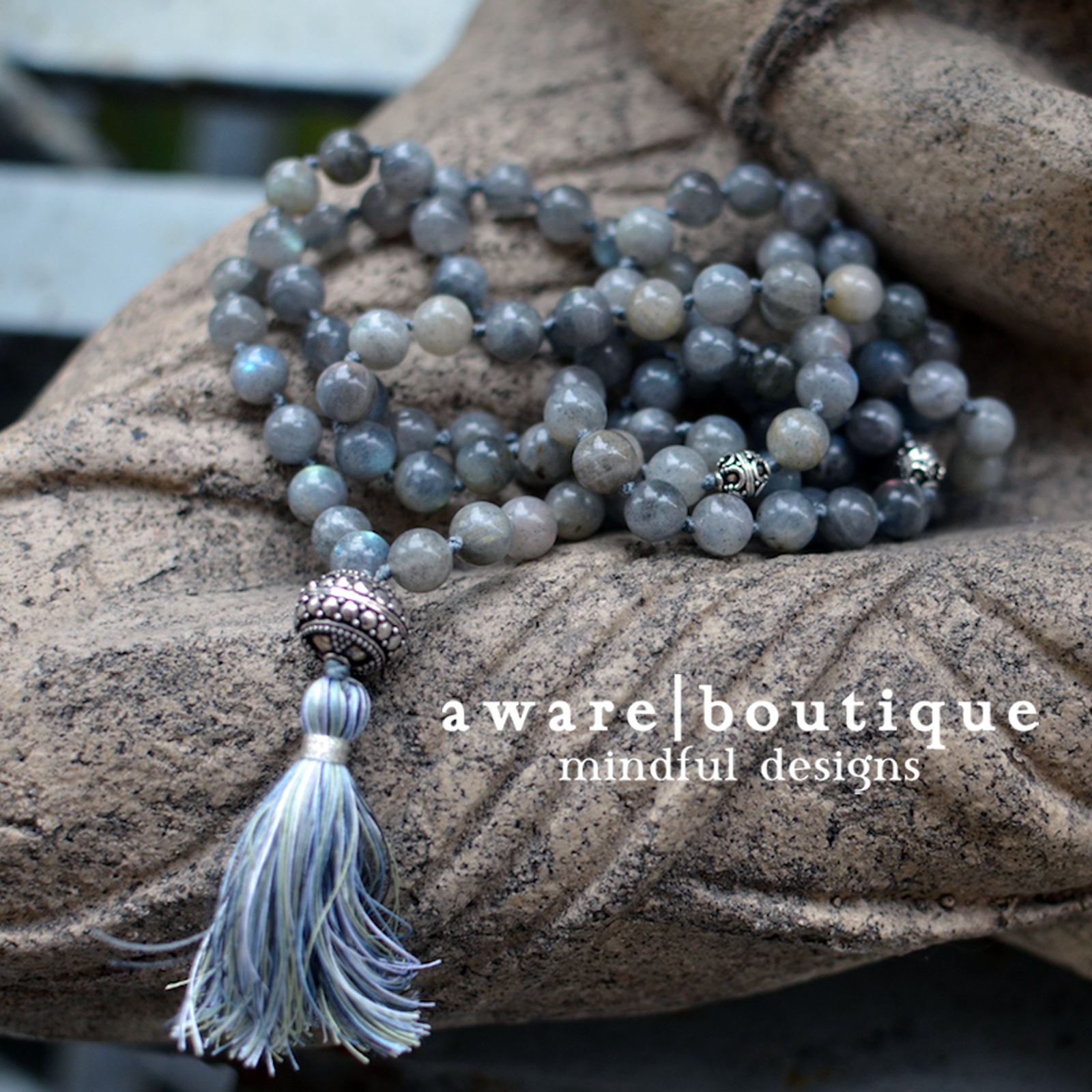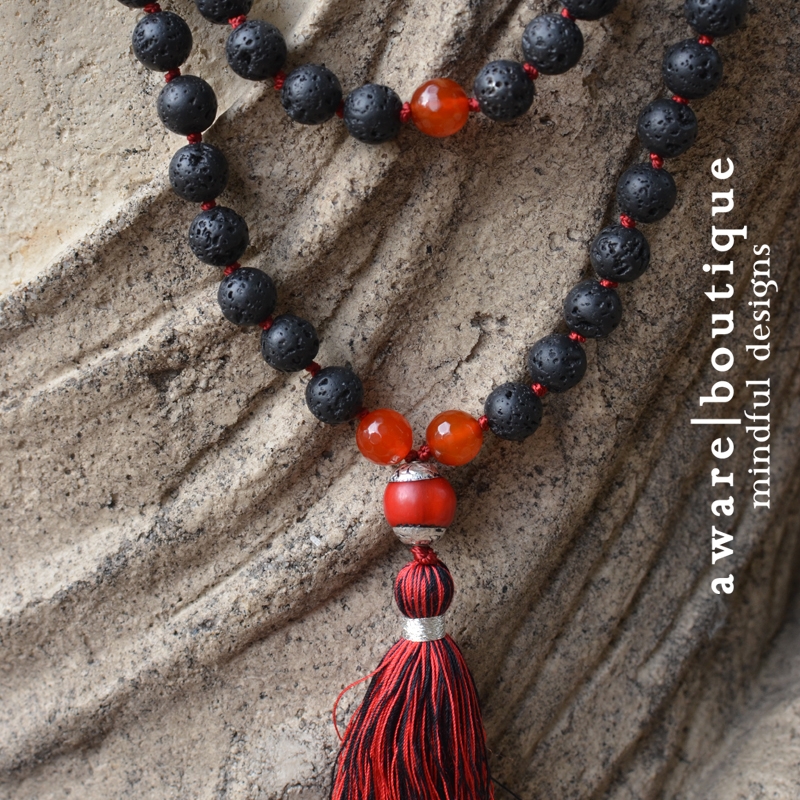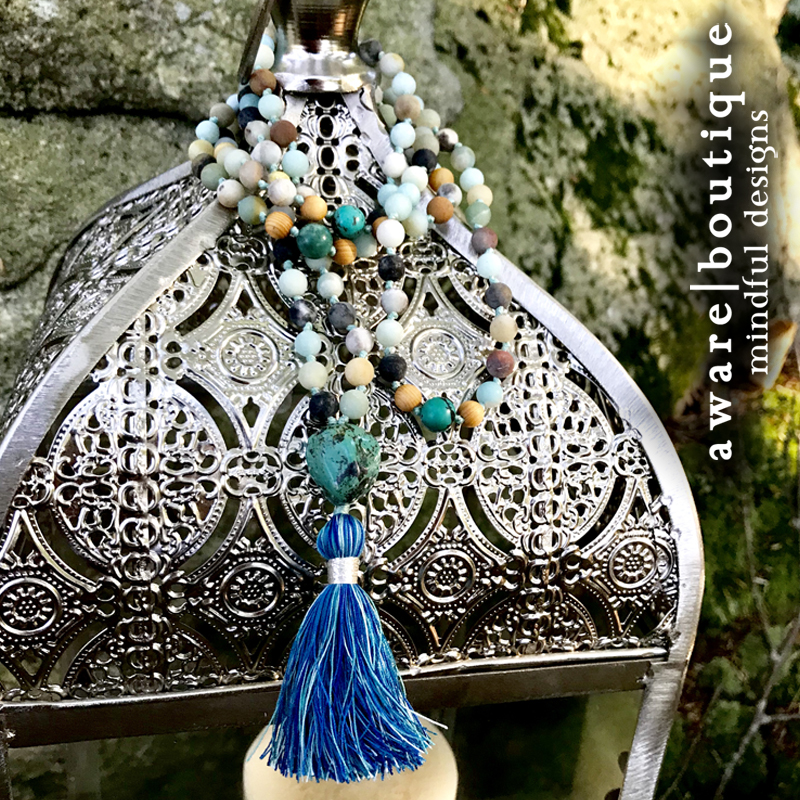Nyx: Goddess of Night







This mala's metaphysical properties include:
- Stability
- Provides strength
- Acts as a shield
- Absorbs negative energy
- Calms Anxiety
- Reduces Pain & Inflammation
- Relieves Stress
- Inspires Imagination
- Promotes Peace & Serenity
- $20 (Sm smooth)
- $25 (Med smooth)
- $30 (Lg smooth)
- $25 (Sm faceted)
- $30 (Med faceted)
- $35 (Lg faceted)
In Ancient Greek Mythology, Nyx was the goddess of the night, one of the primordial gods who emerged as the dawn of creation. Nyx was an ancient deity usually envisaged as the very substance of the night - a veil of dark mists drawn across the sky to obscure the light of her son Aether, the shining blue air of the heavens. Her appearances are sparse in surviving mythology, but reveal her as a figure of such exceptional power and beauty that she is feared by Zeus himself. Nyx is said to have mothered other such deities as Moros (doom), Thanatos (death), Hypnos (sleep), the Oneiroi (dreams), and Eris (strife). This mala tempers these dark sides of our own personality, and brings us back to the light.
This adjustable mala bracelet is part of our Air Collection. It incorporates the same beads as its matching full-size 108 bead mala necklace. This particular bracelet is comprised of Black Onyx, with Lapis Lazuli marker beads and a Labradorite sliding bead as an adjustable clasp. This bracelet has been hand-knotted with blue color Nylon thread for its strength and durability, especially important when working with natural stones, as their hard edges can sometimes rub against and weaken other threads such as cotton or silk. All of our malas are hand-knotted between each bead, which protects your beads should the bracelet ever break. It also helps alleviate potential damage caused by beads rubbing against each other.
This bracelet features a beautiful Triratna pattern emphasizing groupings of 3, with marker beads between each set. While these bracelets do not contain the sacred 27 beads for counting mantras as a quarter portion of a full-size 108 bead mala, the number three is sacred in Buddhism as well. In Buddhism, the number 3 can be seen to represent the Three Jewels (the Triratna) that make up Buddhism. These are: The Buddha, The Dharma (The body of teachings that describe Buddhist doctrine and belief), and The Sangha (The group of people who follow the Buddha and his teachings). If you are looking for a compact mala with 27 beads, a guru bead, and a tassel, please see my listings for Pocket Malas!
Note: This bracelet is available in three different lengths, with either 6mm or 8mm smooth or faceted beads. It is also available in a matte or polished finish. Since these bracelets are adjustable, measurements reflect the shortest (fully closed) length of each size. Sizes are as follows:
Small - 6.25" (only available in 6mm)
Medium - 7.5" (6mm or 8mm)
Large - 8.75" (6mm) or 9" (8mm)
Please note that due to the unique, hand-knotted nature of our jewelry, sizes may vary slightly from one piece to another. Please specify bead size, finish, and bracelet length during checkout.
Black Onyx
A powerful protection stone, Black Onyx absorbs and transforms negative energy, and helps to prevent the drain of personal energy. It aids the development of emotional and physical strength and stamina, especially when support is needed during times of stress, confusion or grief. Black Onyx fosters wise decision-making. Use it to encourage happiness and good fortune. Black Onyx is a strength-giving stone and can provide support for self-discipline issues. Because it helps to hold physical memories, Black Onyx can be useful in healing old wounds or past life issues. It is wonderful for meditation and dreaming. When using it for either of these purposes, it is recommended to use a secondary grounding stone in combination with the Onyx. Black Onyx helps one to become master of their own future.
Lapis Lazuli
Lapis Lazuli is one of the most sought after stones, and has been in use since man's history began. Its deep, celestial blue remains the symbol of royalty and honor, gods and power, spirit and vision, a universal symbol of wisdom and truth. Its name comes from the Latin lapis, "stone," and the Persian lazhuward, "blue." It is a rock formed by multiple minerals, mostly Lazurite, Sodalite, Calcite and Pyrite, and is a rich medium to royal blue with gold flecks (pyrites). Lapis Lazuli was among the most highly prized tributes paid in ancient Egypt, obtained from the oldest mines in the world, worked from around 4000 B.C. and still in use today. Referenced in the Old Testament as sapphire (unknown in that part of the ancient world), Lapis Lazuli is most likely the fifth stone in the original breastplate of the High Priest, as well as those of later times. In the dry, barren land of the Egyptians, this deep cobalt blue color was a spiritual contrast to their arid desert hues. The gold flecks were like stars in their night-time sky and by meditating on these colors they felt supernatural forces would transform their lives. In ancient Persia and pre-Columbian America, Lapis Lazuli was a symbol of the starry night, and a favorite stone of the Islamic Orient for protection from the evil eye. Buddhists recommended Lapis as a stone to bring inner peace and freedom from negative thought. Lapis Lazuli relieves general pain and inflammations, and is especially effective against migraine headaches. It aids the nervous system and brain disorders, and is believed to help with attention-deficit, autism and Asperger's syndrome. As a protection stone, Lapis Lazuli recognizes psychic attack and blocks it, returning the energy back to its source. It quickly releases stress, allowing for peace and serenity.
Labradorite
Lore of the Inuit peoples claim Labradorite fell from the frozen fire of the Aurora Borealis, an ordinary stone that transforms to the extraordinary, shimmering in a mystical light that separates the waking world from unseen realms. Labradorite is also the most powerful protector of the mineral kingdom, creating a shielding force throughout the aura and strengthening natural energies from within. It protects against the negativity and misfortunes of this world, and provides safe exploration into alternate levels of consciousness and in facilitating visionary experiences from the past or the future. Labradorite is a member of the Feldspar family and is treasured for its remarkable play of color, known as labradorescence. The stone, usually gray-green, dark gray, black or grayish-white, is composed in aggregate layers that refract light as iridescent flashes of peacock blue, gold, pale green, or coppery red. The predominant blue varies within the light, displaying hues from deepest blue to various shades of pale, almost blue-green. Labradorite tempers the negative side of our personality, the traits and actions that rob our energy and may produce depression or shame. Labradorite calms an overactive mind and energizes the imagination, bringing in new ideas. It is a wonderful tool for returning joy and spontaneity back to one's life. It helps eliminate the emotional drain of daily routine or being weighed down by responsibility, and awakens a sense of adventure and change. Eskimo legend is that in a fit of passion over lost love a great warrior threw his sword into a stone wall which casued the stone to shatter. This released the Northern Lights and the stone turned into Labradorite.
